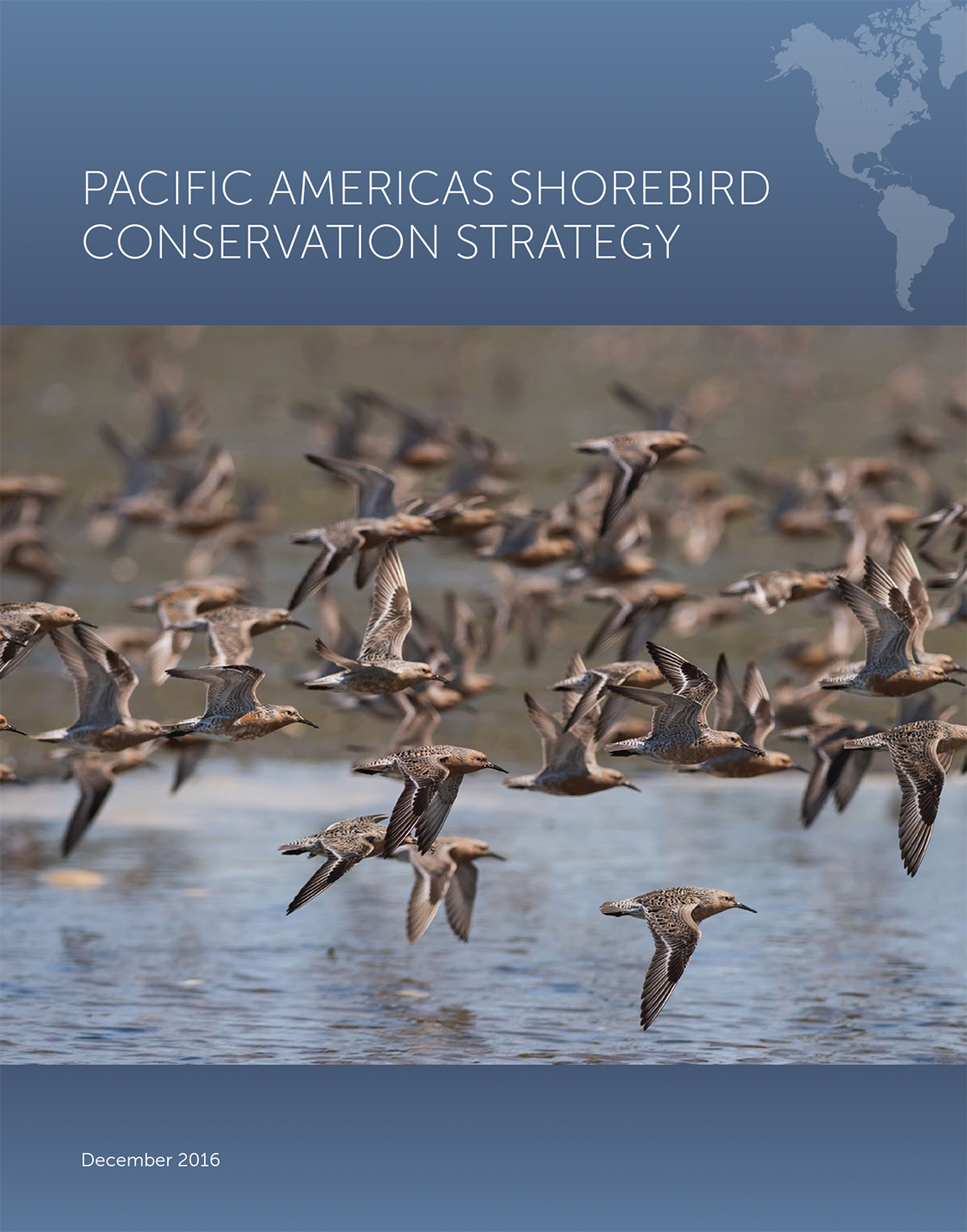Pacific Americas Shorebird Conservation Strategy

The Pacific Americas Flyway— a network of breeding and wintering sites for migratory shorebirds— spans multiple biomes and ecosystems within 14 countries. Migratory shorebirds using the flyway are experiencing dramatic population declines due to anthropogenic pressure and changing climatic conditions. Halting these declines and conserving the sites on which shorebirds depend, will require international collaboration between different sectors and disciplines. The Pacific Americas Shorebird Conservation Strategy has been developed in order to focus conservation priorities and guide conservation actions at a hemispheric scale. It integrates the knowledge of shorebird experts, conservation programs and shorebird recovery plans, as well as the input given by dozens of institutions and stakeholders.
The strategy identifies priority threats, highly effective conservation actions and approaches necessary to maintain and restore shorebird populations. Threats associated to shorebird declines and their coastal habitats include: climate change, coastal development, water use, aquaculture and shoreline modification among others.
The document proposes conservation strategies and outlines actions to address specific threats that might be useful for outlining and prioritizing project ideas. The document also identifies 170 key shorebird sites along the Pacific Americas flyway, where projects will most likely have a positive impact on shorebird populations. You can download the strategy and explore an interactive map with the key shorebird sites at our homepage
References:
Senner, S. E., B. A. Andres and H. R. Gates (Eds.). 2016. Pacific Americas shorebird conservation strategy. National Audubon Society, New York, New York, USA. Available at: https://pacificflywayshorebirds.org/